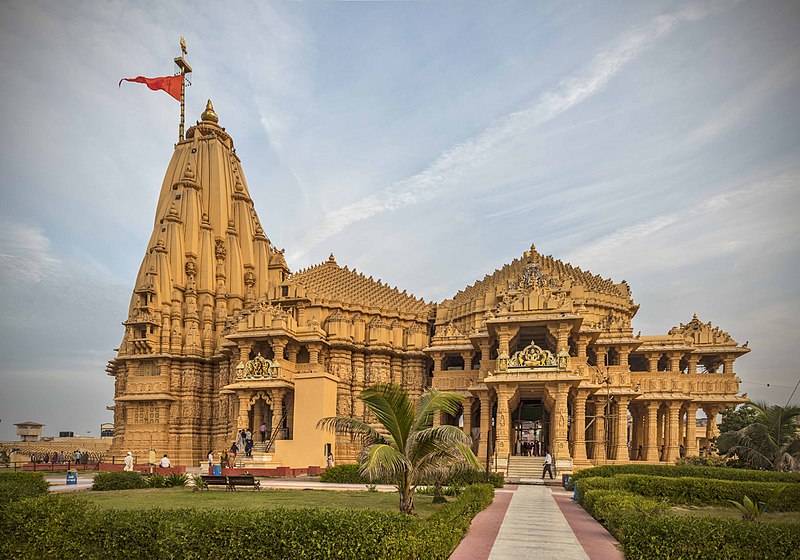Sri Somnath (Jyotirlinga) Temple- Gujarat

Address
Sri Somnath (Jyotirlinga) Temple, Somnath Mandir Rd, Veraval, Gujarat 362268
Deity
Moolavar: Somnath (Shiva)
Introduction
- Location: The Somnath Temple, also known as Somanātha Temple or Deo Patan, is situated in Prabhas Patan, Veraval, Gujarat, India.
- Significance:
- It is one of the most sacred pilgrimage sites for Hindus and believed to be the first among the twelve Jyotirlinga shrines of Shiva.
- The temple has been reconstructed several times after being repeatedly destroyed by Muslim invaders and rulers. The first version of the temple is estimated to have been built between the 1st to 9th century CE.
- The present Somnath Temple was rebuilt in the Māru-Gurjara style after India’s independence.
- The Prime Minister of India, Narendra Modi, is the chairman of the Shree Somnath Mandir Trust.
Puranic Significance:
- Meaning of Somnath: The name Somnath means “Lord of the Soma” (moon), and the site is also known as Prabhas (meaning “place of splendor”).
- Historical Significance:
- The temple has been a Jyotirlinga and tirtha (pilgrimage) site for Hindus. It is one of the five most revered sites on India’s seacoast, along with Dvaraka, Puri, Rameshwaram, and Chidambaram.
- The site is a Triveni Sangam (confluence of three rivers: Kapila, Hiran, and Saraswati). According to myth, Soma (the Moon god) lost his lustre due to a curse and bathed in the Sarasvati River at Somnath to regain it, which explains the waxing and waning of the moon.
- Someshvara or Somnath (“the Lord of the Moon”) refers to this tradition and the temple’s connection with Lord Shiva.
- Historical Background:
- The Gurjara-Pratihara king Nagabhata II recorded his visit to Somnath in the 9th century.
- The Chaulukya (Solanki) king Mularaja is believed to have built the first temple at the site before 997 CE, though some historians suggest he may have renovated an earlier structure.
Special Features:
- Sacred Texts: Many Hindu texts, such as the Shiva Purana (Jnanasamhita), the Varanasi Mahatmya, and the Skanda Purana, mention Somnath as one of the most sacred Shiva pilgrimage sites.
- Archaeological Excavation:
- The floor plan and ruins of a pre-1000 CE temple were unearthed during excavations led by B.K. Thapar.
- The remains suggest an exquisitely carved, rich temple. According to scholar Dhaky, the original temple was a tri-anga sandhara prasada with a garbhagriha (sanctum) connected to a mukhamandapa (entrance hall) and gudhamandapa.
- The destroyed temple’s stylobate had two parts: the pitha-socle and the vedibandha-podium, adorned with ornate foliage patterns. The Surasenaka niche contained a figure of Lakulisa, affirming the Shiva connection.
Festivals:
- Maha Shivaratri is one of the most significant festivals celebrated at the Somnath Temple.
Century/Period/Age
2000 years old
Managed By
Shree Somnath Trust
Nearest Bus Station
Deo Patan
Nearest Railway Station
Patan
Nearest Airport
Ahmedabad









